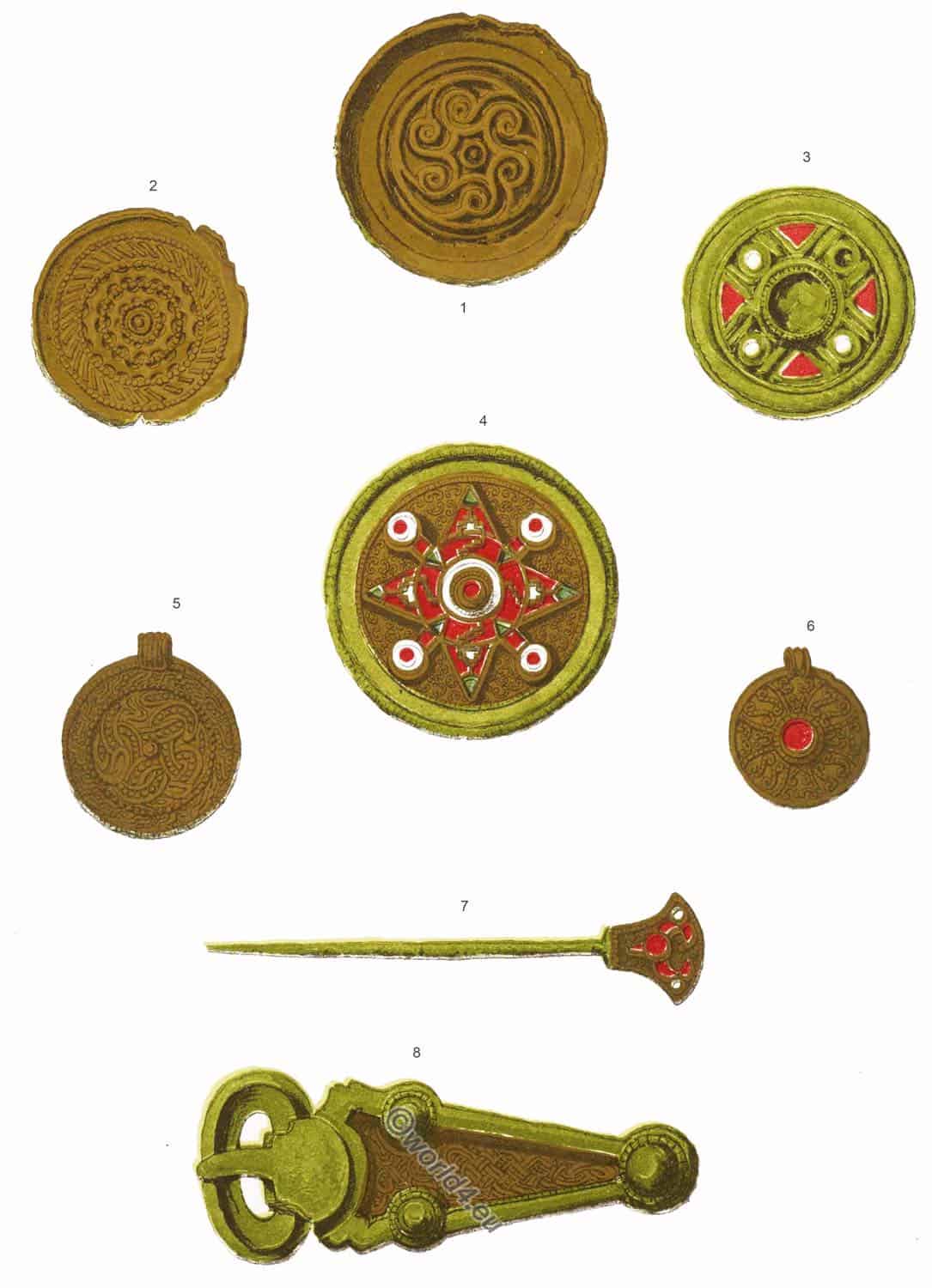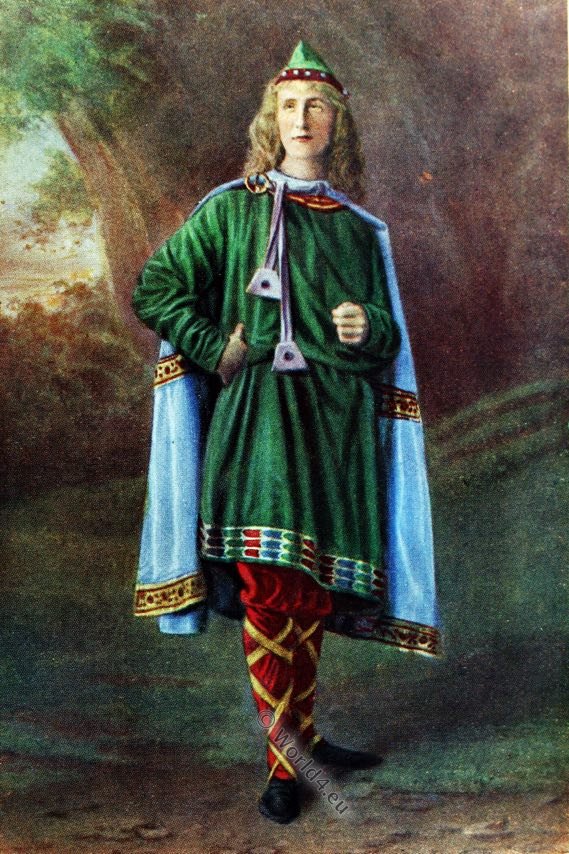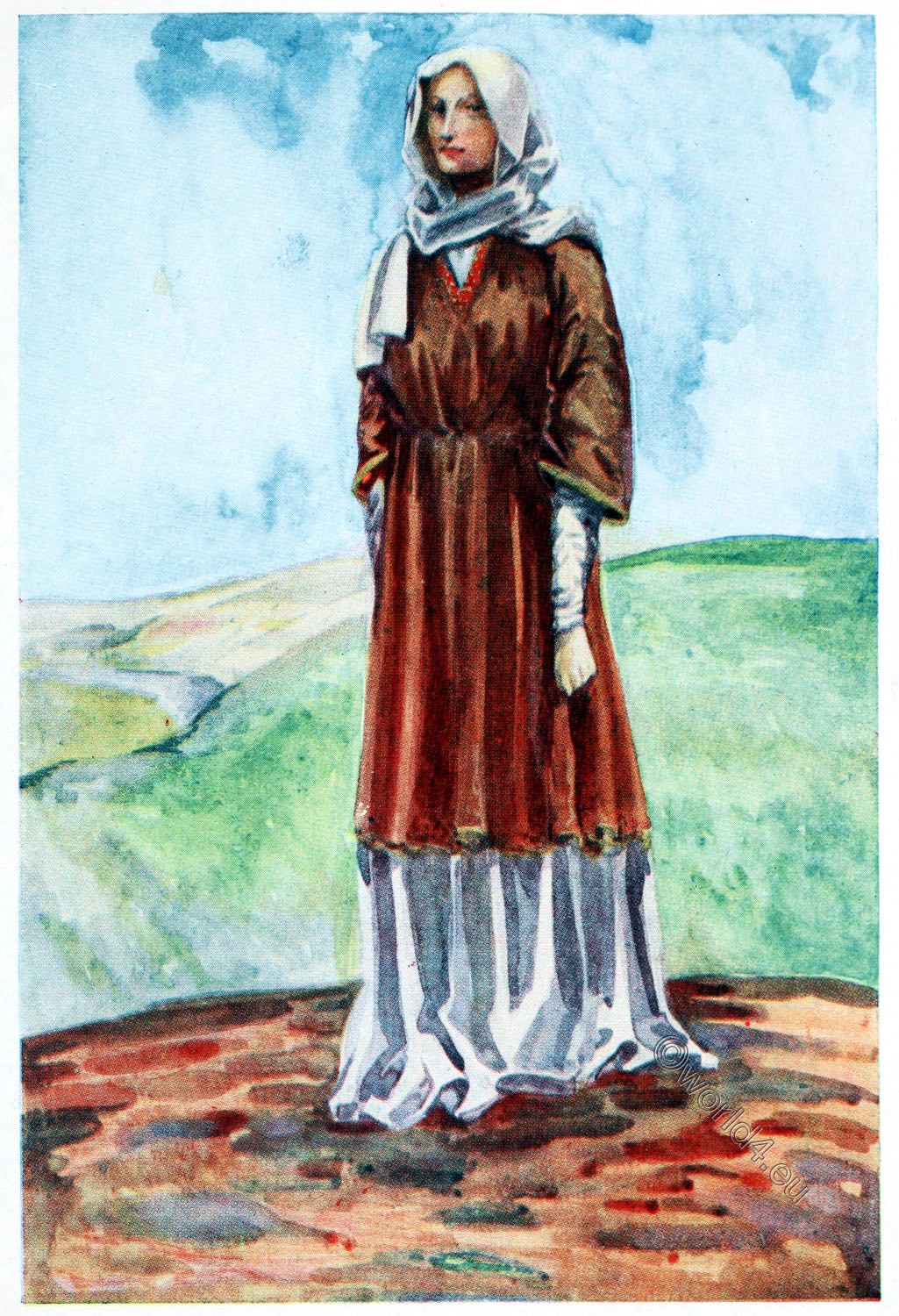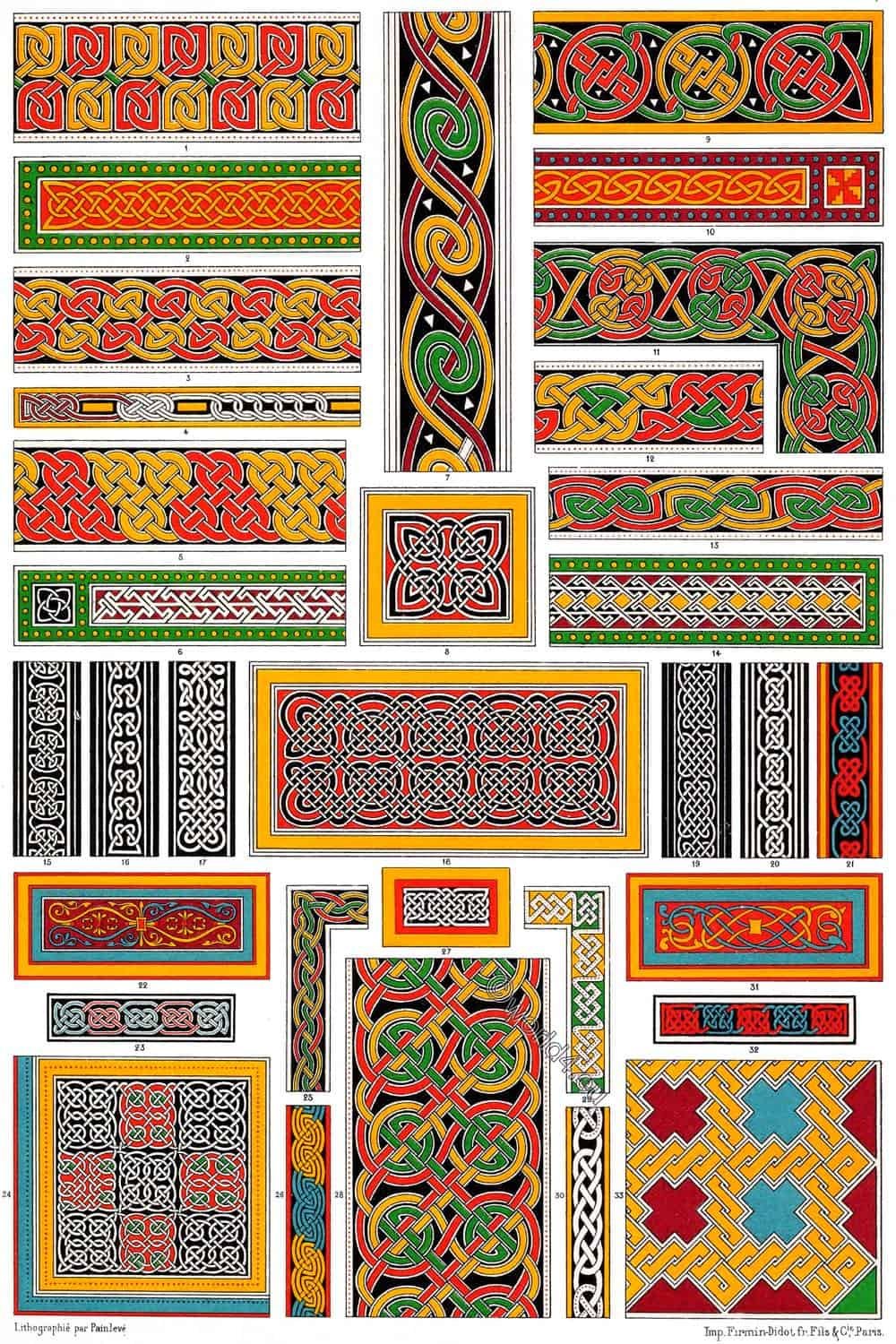
ANGLO SAXON ORNAMENTS.
Fibula, Pendant, Pin and Buckle. Discovered in 1843.
Fig. 1. FIBULA, of bronze, gilt. It is concave-shaped, like a saucer; and is ornamented with an interlaced spiral pattern in raised lines, surrounding a central circle. It was discovered in Oxfordshire.
Fig. 2. FIBULA, of bronze, gilt. This is also saucer-shaped, but less boldly developed than Fig. 1. The surface is decorated with very peculiar ornament, part raised, and part sunk in half circles. It was also discovered in Oxfordshire in 1851.
Fig. 3. FIBULA, of bronze; set with four triangular slices of garnet, and four pearls (one of which has perished); the central ornament, also probably of pearl, has perished. It was found in a tumulus on Breach Downs, about four miles from Canterbury, in the year 1842, when Lord Londesborough superintended the opening of fifty-two tumuli; a detailed account of the result is published in Archceologia, vol. xxx.
Fig. 4. FIBULA, gold and bronze. It was discovered by Lord Londesborough in a tumulus containing the remains of a female, at Wingham, near Canterbury, in 1843. It is composed of a disc of bronze, upon which is affixed a smaller disc of gold; in the centre is a star-shaped ornament, decorated with a series of cells, enriched with slices of garnet, laid upon gold foil ridged with transverse lines to give them greater brilliancy; other compartments are filled with a blue vitreous paste. The circles between each point of the star are composed of raised knobs of pearl, the summit of each set with a slice of garnet; small scrolls of gold filigree, of most minute and beautiful workmanship, fill the base of the jewel.
Fig. 5. PENDANT, or BULLA, of gold; the ornament upon its surface is raised by means of a die. It was found in the same grave with Fig. 4, just described.
Fig. 6. PENDANT, of gold. The ornament consists of wreathed threads of gold filigree secured to its surface; in the centre a garnet is imbedded on a raised surface. It was found in a tumulus on Breach Downs, in the course of the excavations noted above.
Fig. 7. PIN, of bronze; upon the head is affixed a plate of gold; the ornament upon this consists of small cells filled with slices of garnet and pearl; the interstices are filled by minute studs enriched with ornament. It was found at Wingham with Figs. 4 and 5.
Fig. 8. BUCKLE, of bronze ; upon which are traces of silver plating; in the centre is affixed a plate of gold richly decorated with an interlaced pattern in embossed work, bounded by a reeded line all round. It was found in the same tumulus with Fig. 3; upon the pelvis of a female skeleton; a silver bracelet, some very minute beads, and a small ring, were also found; and fragments of a casket discovered between the feet.
Scale; full size of the originals.
Source: Miscellanea graphica: representations of ancient, medieval, and renaissance remains in the possession of Lord Londesborough. Contributor: Frederick William Fairholt, 1857.






